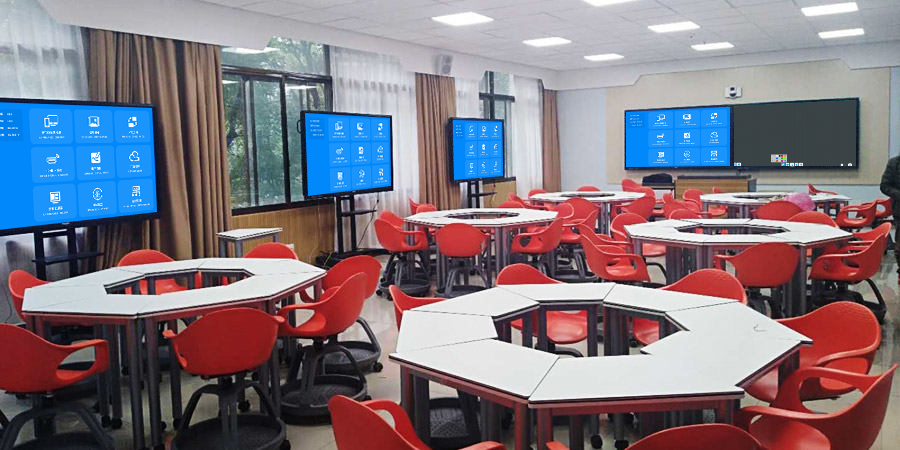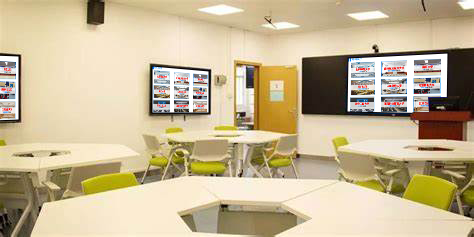Group Discussions: A New Way to Double Collaboration Efficiency
Group discussions are no longer stuck in the inefficient mode of “clustered talking + paper notes.” A collaboration system designed for group scenarios can ensure each group’s ideas flow quickly and results are presented intuitively, allowing collective intelligence to collide effectively.
I. Multi-Screen Linkage: Seamless Connection Between Groups and the Collective
Each group is equipped with an independent screen, forming a “star connection” with the main display. Within a group, members can wirelessly mirror content from their phones and computers, sharing documents, sketches, and data in real-time. For collective sharing, the group screen content can be “pushed to the main screen” with one click, allowing the entire class or all participants to view it simultaneously, avoiding the time wasted on taking turns at the front. When 6 groups are discussing concurrently, switching to display each group’s results on the main screen takes only 2 seconds, making comparative analysis more intuitive.
II. Real-Time Interaction: Ensuring Every Idea Is Seen
- Multi-User Annotation: Group screens support multiple users annotating simultaneously, using different colored pens to distinguish viewpoints. Key points can be circled and ideas added at any time during the discussion, with all traces saved in real-time.
- Instant Summarization: Group leaders can one-click integrate mirrored content from group members, generating mind maps or comparison tables. Once dragged to the main screen, everyone can annotate and comment, preventing fragmented discussions.
- Cross-Group Linkage: Adjacent groups can push content to each other for reference. In a corporate strategy workshop, the marketing team and product team can share data in real-time, leading to deeper brainstorming.

III. Real-World Scenarios: Tangible Efficiency Gains
- Classroom Discussions: A 6-person group analyzes a case. They take a photo of a whiteboard draft with their phone and mirror it to their group screen. After members add annotations, it’s pushed to the main screen. The entire class then compares different solutions, boosting classroom participation from 60% to 90%.
- Corporate Meetings: Departments discuss proposals in groups, with the group screens real-time recording modification traces. After the main screen aggregates the content, decision-makers can directly annotate optimization directions on the large display, shortening proposal finalization time by 40%.
- Training Workshops: Participants complete tasks in groups, with group screen content syncing to the instructor’s terminal. The instructor provides remote annotated guidance, and each group’s progress is controllable in real-time, leading to more practical training outcomes.
The pain points of traditional group discussions—information unsynchronized, results difficult to integrate, and discussions leaving no trace—can all be resolved here. This ensures that each group’s thinking isn’t confined to its “small circle” but becomes a crucial piece of the collective intelligence puzzle.
